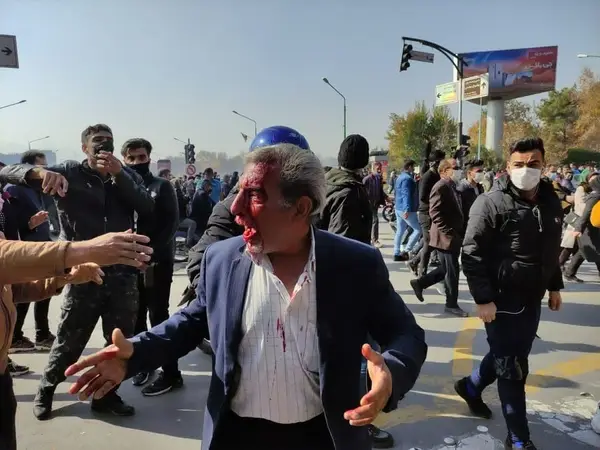Spokesman of Iran's judiciary Tuesday for the first time accused some of the detained protests in Esfahan of using firearms, without presenting any evidence.
Speaking to reporters at his weekly press conference, Zabihollah Khodaeian said around 130 were arrested during the protests and indicted, some were immediately freed, and another group were freed Monday. "Except those who had fired weapons whose crime is disturbing security, others have been freed on bail or are in the process of being freed," he added.
Rights organizations say at least 214 including 13 children were arrested during recent protests.
Security forces cracked down on farmers' two-week-long protests against water shortage in Esfahan, centered in the dried-up Zayandeh Roud riverbed, with tear gas on 25 November in the middle of the night, set fire to their makeshift camp and bulldozed the remains. A few days later, the state television aired "confessions" of a young woman and man taking the blame for torching the farmers' tents "to provoke a riot".
On 26 November security forces pushed thousands of citizens of Esfahan -- who were trying to join the farmers in the dry river bed -- out into the adjacent boulevards and streets where they attacked them with batons, teargas, and shotgun pellets.
Videos and photos posted on social media from the November 26 protests, during which protesters chanted anti-government slogans, showed violence from the security forces in the river bed and on the streets, a few instances of protesters throwing stones at security forces, and one instance of protesters setting fire to a police motorbike but no use of firearms by the protesters. The authorities have also not offered any evidence of protester use of firearms so far.
In the same videos, anti-riot police and other security forces are shown brutally beating protesters with batons and chasing them even inside their houses, and instances of a security officers directly shooting at protesters.
There are also quite a few videos and photos that show protesters including elderly men and women, apparently farmers, with shotgun pellet wounds on their faces and bodies both on the street and in hospital receiving treatment for their wounds.
Rights groups and medical authorities have confirmed several cases of loss of eyes resulting from shotgun pellet injuries. A medical official told Iranian state television on November 27 that 40 people had been treated for eye injuries sustained during the previous day's protests, with 19 hospitalized.
"It was the police who did this, don't go and claim later that they were thugs and hooligans," a wounded old man in one of the videos says. Authorities often refer to anti-government protesters as "thugs and hooligans".
Iranian authorities often blame foreign powers after they violently suppress protests and cast the blame for injuries and destruction of public properties on 'agents of the enemy', 'thugs and hooligans', and 'seditionists'.
On December 3, security forces imposed an undeclared martial law in the areas close Zayandeh Roud where protesters were planning to gather again to hold communal prayers.
